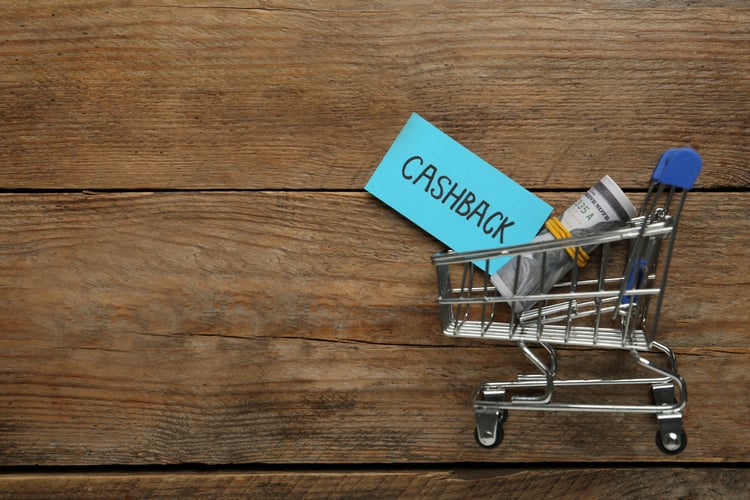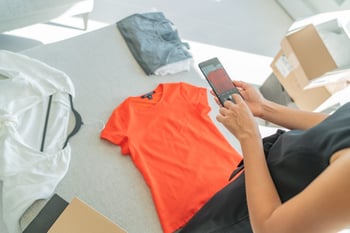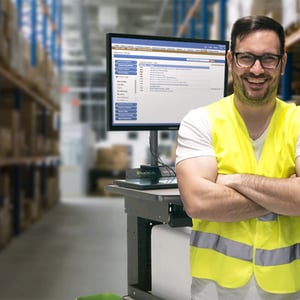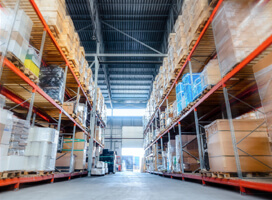
If you’re an eCommerce seller, what you do involves much more than just selling products online and getting them into the hands of customers. To create a successful and sustainable business, you need to build trust and lasting relationships with your customers. And that often involves handling returns.
If your reverse logistics processes and procedures aren’t up to par, your business results are going to suffer. Here is what you need to know about the reverse logistics process and how it is so closely related to customer service in eCommerce.
What is Reverse Logistics?
Reverse logistics represents all of the operations related to the return of eCommerce products from the customer and any reuse or reselling of those materials. The process includes the handling of return shipments, refunds, possible materials recycling, refurbishment, return to inventory, and reselling of items that have been restocked.
Normally, logistics focus on events that take products toward the customer. But, after the sale, those products can move in the reverse direction, and sellers must be prepared to handle this process efficiently.
What is eCommerce Customer Service?
Businesses selling products online today have come to understand that eCommerce customer service is the key to building trust, generating positive online feedback, earning brand loyalty, and boosting overall results. eCommerce customer service is how online sellers provide assistance with their purchase decisions and purchases by creating a problem-free customer experience.
Why eCommerce Customer Service is Important
 As an increasing number of consumers move their shopping activity online, one of the ways eCommerce stores compete is through customer service. Most of today’s consumers expect to have access to an intuitive website, easy check-out cart, speedy shipping service, and a friendly returns policy.
As an increasing number of consumers move their shopping activity online, one of the ways eCommerce stores compete is through customer service. Most of today’s consumers expect to have access to an intuitive website, easy check-out cart, speedy shipping service, and a friendly returns policy.
According to a recent PwC report, 73% of consumers say the customer experience influences what they buy and who they buy it from. And 42% of consumers are willing to pay more if they can have a more welcoming and friendly experience.
What does this have to do with returns? Not surprisingly, a lot. If you’re only giving good customer service on the front end of the sale and a poor experience after the sale, your business results are likely to suffer.
How Reverse Logistics and Customer Service Are Interconnected

If you read negative reviews about an online business, a majority of them are going to deal with something that happened after the sale. Sure, a small percentage of customers might be unhappy with the company’s user interface. But many more will take issue with how a business handles customer returns.
Returns are a hot-button issue for consumers, particularly for online shoppers. People perceive buying something online as a bit of a risk. There’s no guarantee that the shirt they’re buying is going to fit or the color will be exactly the same as it appears on their computer screen. If they aren’t happy, or if the product shows up damaged or not as described, a customer wants assurances that they can return it and get their money back.
But not all eCommerce sellers make the reverse logistics process simple and seamless. In fact, many companies still discourage returns and lose customers for their efforts. When reverse logistics isn’t handled properly, it’s a sure way to destroy any trust that was created leading up to the sale. In the end, your business will get a ton of negative reviews, and its online reputation will plummet.
How to Lose a Customer During the Returns Process
For today’s online shoppers, returns become necessary in nearly one-third of purchases for a variety of reasons. This sets the reverse logistics machine in motion. It can be all too easy to lose your customer during this process if you fall short in any of these areas:
1. You have unclear policies and shipping costs.
Customers who expect free returns and learn they must pay shipping costs won’t be happy. If the cost of return shipping is more than the customer is willing to pay, it’s going to impact their overall experience.
2. There aren’t any available replacements.
Another way to lose customers is if you carry limited stock on your items and are unable to fulfill their needs. This is particularly the case if you shipped the wrong item to them the first time and are later out of stock on the item the customer really wants.
3. The time to return and refund is extensive.
A major source of dissatisfaction with consumers is the time it takes for online sellers to handle returns. If you can process an order in just a day or two, customers expect that you should be able to do the same with their returns, not take one to two weeks to provide a refund.
Efficient Reverse Logistics Drives a Better Customer Experience
The best way to handle reverse logistics is by turning it into a positive customer experience. According to TermsFeed, 81% of consumers are more loyal to sellers with generous returns policies, and over 73% are less likely to purchase from a store with restrictive policies. Here are just a few best practices to add efficiency to your reverse logistics process and improve the customer experience:
1. Set Clear Terms
Be completely transparent about your eCommerce store’s return policy. Customers won’t be happy if there are surprises when they need to make a return. Post your policy on multiple places throughout your website and on your check-out page.
2. Automate Returns
Don’t make customers call or email you to initiate a return. Allow them to do this automatically through your website, which should also set up tracking for the shipment and any applicable refunds or replacements.
3. Leverage Mobile Technology
 Leverage the same mobile technology you use for order processing to handle reverse logistics. When an item is returned to your warehouse, have a mobile cart station available to process items quickly to determine whether they should be refurbished, returned to inventory, recycled, or something else. The faster you can do this, the quicker you can refund your customer and help them purchase something else.
Leverage the same mobile technology you use for order processing to handle reverse logistics. When an item is returned to your warehouse, have a mobile cart station available to process items quickly to determine whether they should be refurbished, returned to inventory, recycled, or something else. The faster you can do this, the quicker you can refund your customer and help them purchase something else.
Today’s eCommerce businesses face tough competition and rising consumer expectations. Perfecting your order fulfillment process is essential. But it’s just as important to make reverse logistics a priority because it impacts the customer experience. Fortunately, you can use many of the same strategies and tools to add automation, tracking, cost savings, and efficiency to product returns.

